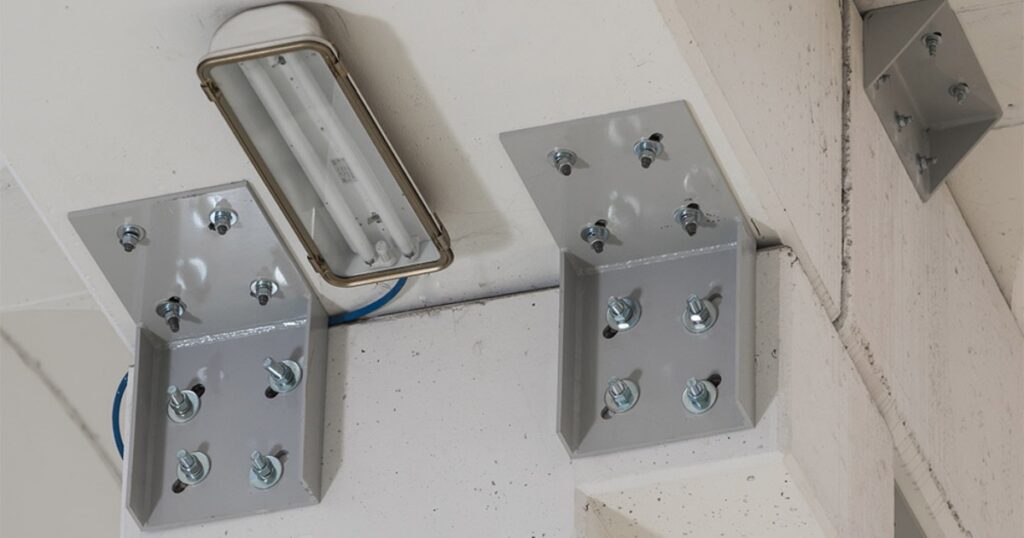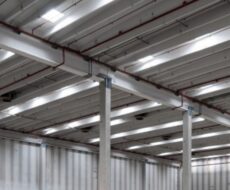
June 23, 2023
Non-dissipative anti-seismic damping restraints: characteristics and role in structural design
In the structural design context, the seismic safety of buildings is of fundamental importance. In addition to dissipative anti-seismic damping restraints, there are also non-dissipative anti-seismic damping restraints, which play a significant role in protecting structures during an earthquake. In this article, we will explore the characteristics and importance of non-dissipative seismic damping restraints in structural design.
What are non-dissipative anti-seismic damping restraints?
Non-dissipative seismic damping restraints are structural elements designed to improve the strength and stability of buildings during an earthquake. Unlike dissipative damping restraints that dissipate seismic energy, non-dissipative restraints are designed to fill gaps and improve the dynamic behaviour of the structure during an earthquake. In pre-fabricated structures, for example, special non-dissipative anti-seismic damping restraints are installed to avoid the loss of support of the structural elements and allow the transfer of seismic actions from the roof to the foundations through the pillars.

Characteristics of non-dissipative anti-seismic damping restraints
Non-dissipative anti-seismic damping restraints have several characteristics that make them important in structural design:
- Rigidity and resistance: Non-dissipative damping restraints are designed to provide a rigid connection between structural elements, reducing unwanted movements and deformations during an earthquake. They are usually made of steel and designed to resist the specific seismic stresses of the structure.
- Transfer of force: Non-dissipative damping restraints play a fundamental role in transferring seismic forces to the foundations. This helps to improve the overall resistance of the building.
- Compatibility with other solutions: Non-dissipative seismic damping restraints can be used in combination with other structural design solutions, such as dissipative restraints, to provide an integrated system of seismic protection.
Importance of non-dissipative anti-seismic damping restraints
Non-dissipative seismic damping restraints play a crucial role in structural design for seismic safety. While they do not dissipate seismic energy, they reduce unwanted movements and deformations and help control structural stresses during an earthquake. They also help improve the building’s overall ability to resist seismic forces, working in synergy with other seismic protection solutions. Furthermore, non-dissipative damping restraints offer a versatile design option, as they can be used in a wide range of building typologies, both new construction and existing structures. They can be integrated into the structural system efficiently and can be adapted to specific needs and site conditions.
The use of non-dissipative anti-seismic damping restraints can provide the following advantages:
- Improvement of stability: Non-dissipative damping restraints help improve the stability of structures during an earthquake, reducing unwanted movements and the possibility of structural failure. This translates into greater safety for the people who occupy the building.
- Reduction of damages: By limiting the deformations and movements of structures, non-dissipative anti-seismic damping restraints help reduce structural damage during a seismic event. This translates into lower repair costs and reduced downtime for the building.
- Compatibility with context: Non-dissipative damping restraints can be designed to integrate harmoniously with the aesthetic appearance of the building. This allows the architectural and functional integrity to be preserved, without compromising seismic safety.
- Cost efficiency: Compared to dissipative damping restraints, non-dissipative seismic damping restraints can be, in some cases, less expensive to implement. They are less complex from a construction point of view and require less maintenance over time.
In conclusion, non-dissipative anti-seismic damping restraints represent an important component in structural design for seismic safety. Through their rigidity, strength and force transfer capacity, they help improve stability and reduce structural damage during an earthquake. Their versatility makes them suitable for different building contexts, offering an effective and efficient option for the seismic protection of buildings.
Over the years, Seriana S.p.A. has been able to develop the skills necessary to identify the type of restraint suitable depending on the context of intervention, creating tailor-made solutions based on the business context.






